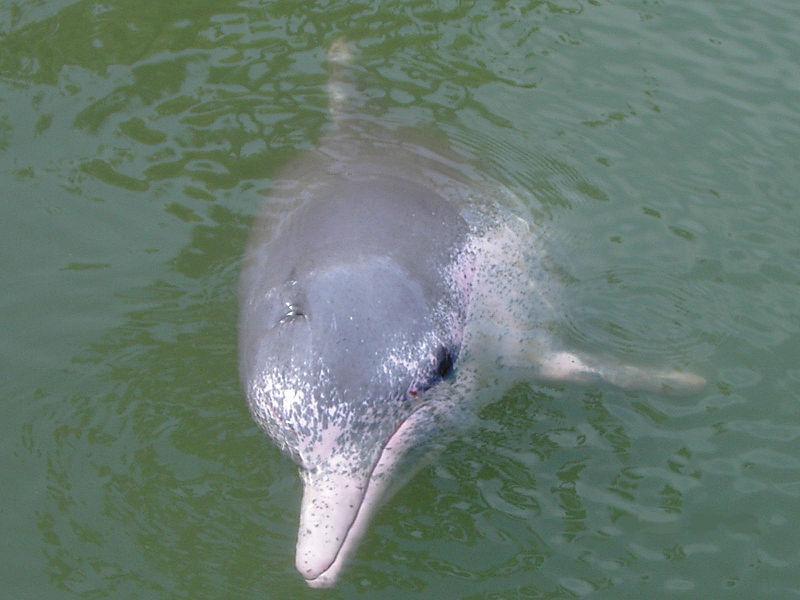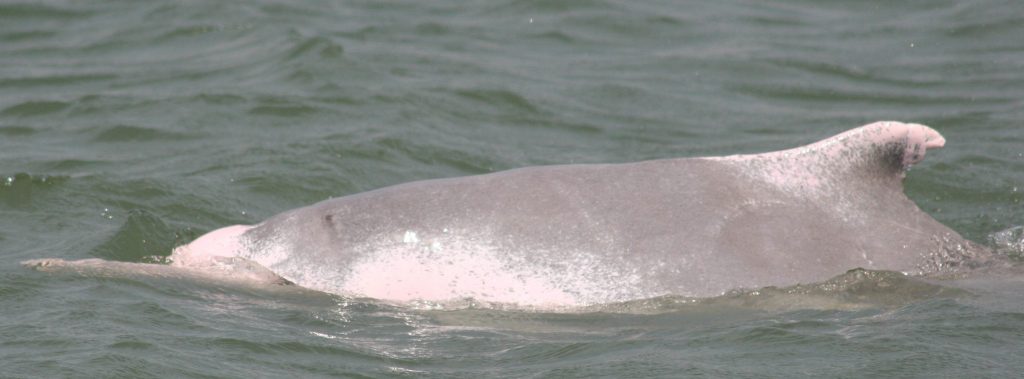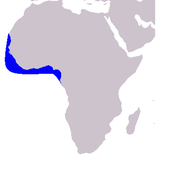Common Name: Indo-Pacific humpback dolphin
Humpback dolphins (Sousa sp.): At least two genetic variations of humpback dolphins occur along the Indian coastline,the Indian Ocean humpback dolphin (Sousa plumbea) along the west coast and the Indo Pacific humpback dolphin (Sousa chinensis) by the east coast, Palk bay northwards. As genetic studies provide newer results this might change further. We shall keep you updated!
General Description:
The Indo Pacific humpback dolphin is a large cetacean with a slender beak and a slight melon on the forehead. It has rounded flippers. The small but prominent dorsal fin is placed on a small hump in the middle of the back. This platform for the fin is not as distinctive in the chinensis as it is in plumbea, and is almost absent in the animals in the South China Sea. There are marked keels above and below the tailstock. There is a distinct notch between the tail flukes, which are moderately concave along the rear edge.
The colour of the species is highly variable, but specimens off east India are light grey with predominantly pink pigmentation on the skin surface. Longitudinal blotches are found on the ventral side in larger specimens. The lower jaw may be cream coloured. Calves have a uniform pale cream colouration.

Size: Adults, Male Hump-backed Dolphins may be 3.2 m long, and females up to 2.5 m. They weigh up to 285 kg. Calves at birth, 90 cm long.
Appearance At Sea: Humpback dolphins surface to breathe in a very distinctive way. The beak emerges from the water first, and then the melon and hump. As it breathes, the animal cruises with the beak just on the water surface. Sometimes the head is lifted clear of the water and the hump and fin are clearly visible then. Finally the dolphin rolls, its head going down and the hump emerging more, before sliding out of view.
The usual social unit consists of a group of 2-20 who move together in an orderly fashion. Small groups of humpback dolphins often associate with bottlenose dolphins. Finless porpoises while sympatric with humpback dolphins are never found in the same place together at the same time.
Humpback dolphins have been observed to drive fish towards shore, and into the fishermen’s nets. They are also known to depredate fishing nets by tearing and stealing fish from nets causing catch loss and damage to gill net and purse seine fishers.

Found In: The Indo-Pacific humpback dolphin prefers to feed close to shore and in tidal creeks. It may enter rivers and estuaries. It is usually found in sheltered coastal waters including mangrove swamps. It is said to be seen in shallow waters less than 20 m deep and rarely out of sight of land.
They feed on fish, molluscs and crustaceans.
This species is recorded from the southeast coast of India till the south China Sea.
World Distribution: It is widely distributed in the warm temperate and tropical waters of the Indian and the western Pacific Oceans.
Could Be Confused With: Humpback dolphins are very easy to identify because of the characteristic hump and distinctive way of breathing. However, individuals without conspicous hump could be confused with Indian Ocean humpback dolphin and with Bottlenose Dolphins as they have a similar body shape.
Diagnostic Features: At sea, prominent dorsal fin placed on hump in the middle of the back; long, slender beak. Pink pigmentation and light coloured body.
Stranded Specimens: A dead adult can be easily identified by its hump and number of teeth. There may be 29 to 38 pairs of peg-like teeth in each jaw. Bottlenose Dolphins with which Hump-backed Dolphins are sometimes confused have not more than 26 teeth in each side of both jaws.




